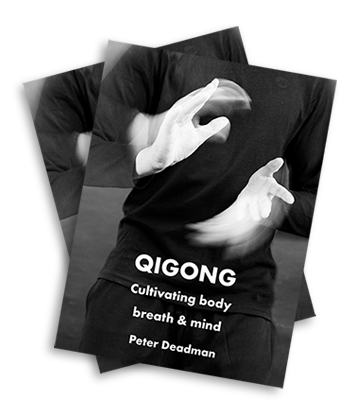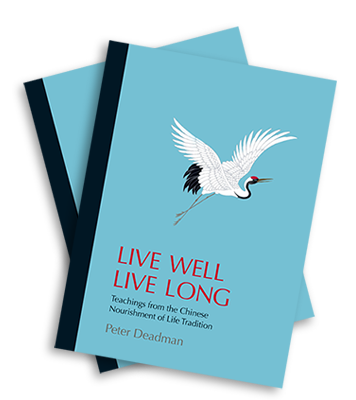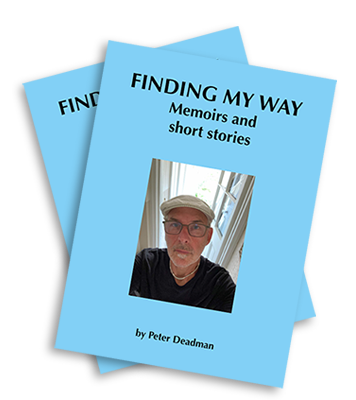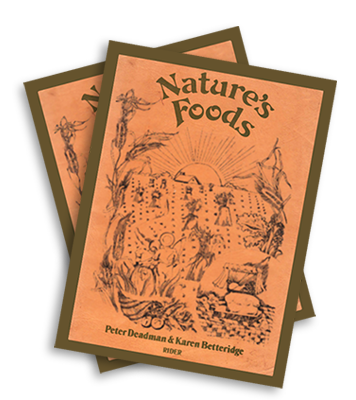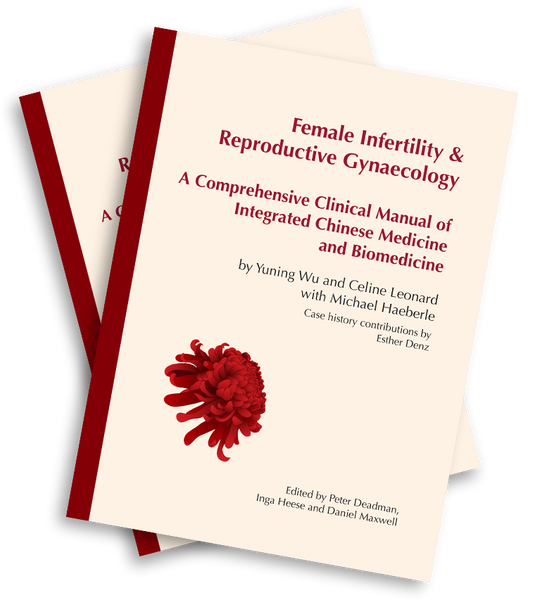
Female Infertility & Reproductive Gynaecology
This landmark manual is the most complete presentation of the integrated Chinese and biomedical treatment of infertility and reproductive gynaecology in the English language. Although primarily devoted to Chinese herbal medicine, the comprehensive discussions of every aspect of infertility, and the acupuncture protocols given for every pattern, will benefit every practitioner working in the field.
Its primary author, Professor Yuning Wu, is principal doctor and Professor of Integrated Chinese and Western Medicine at the Beijing Hospital of Traditional Chinese Medicine and is one of the most eminent fertility specialists working in China.
Take a sneak peak at what's inside the book
VIEW PREVIEWMore information & reviews
Click below to expand and read
This landmark manual is the most complete presentation of the integrated Chinese and biomedical treatment of infertility and reproductive gynaecology in the English language. Although primarily devoted to Chinese herbal medicine, the comprehensive discussions of every aspect of infertility, and the acupuncture protocols given for every pattern, will benefit every practitioner working in the field.
Its primary author, Professor Yuning Wu, is principal doctor and Professor of Integrated Chinese and Western Medicine at the Beijing Hospital of Traditional Chinese Medicine and is one of the most eminent fertility specialists working in China. Infertility is one of the fields where the finest integration of the two medicines can be found and Yuning Wu demonstrates throughout this deeply clinical book the strengths of this dual approach. However, her deep knowledge of biomedicine and her willingness to use it whenever appropriate should not obscure her mastery of Chinese medicine. Readers will quickly discover that her disease diagnosis, pattern differentiation, choice of prescriptions, precise modifications and understanding of individual medicinal substances is of the highest order and based on extensive clinical experience. Chinese medicine practitioners throughout the world and their many thousands of grateful patients owe her an enormous debt for making the fruits of a lifetime of dedicated medical practice so generously available to all.
As she writes in the Preface, “In this book, I offer my nearly 50 years of experience without holding anything back in order to help practitioners truly understand the essence of Chinese medicine. This includes understanding the aetiology of disease by differentiation of its symptoms and signs (审证求因, shen zheng qiu yin), individualised treatment based on pattern differentiation (辨证论治,bian zheng lun zhi), and the concept of holism (整体观念, zheng ti guan nian) which always considers the patient as a whole and strives to regulate the balance of yin and yang, qi, blood and the zangfu organs to treat disease and prevent relapse.
Celine Leonard is an experienced infertility practitioner and long-term student of Dr. Wu. Drawing on her own extensive clinical experience, she drew together material from numerous lectures of Dr. Wu and added her own content and case histories.
Michael Haeberle is a reproductive endocrinonologist working in Zurich, Switzerland. He is a specialist in gynaecology and obstetrics, including operative gynaecology, and author of numerous papers on related subjects.
Esther Denz broguht the authors together and made this book possible. As an experienced practitioner in the filed of infertilty, she has added valuable case histories.
Peter Deadman is an experienced editor and drew together the work of the different authors and editors and complete the editing process in the final year of the project.
Inga Heese is an experienced practitioner of Chinese medicine, specialising in treating infertility in her clinics in the UK and Germany. She cut her editing teeth working on Debra Betts’ Essential Guide to Acupuncture in Pregnancy and Childbirth.
Daniel Maxwell is a practitioner of Chinese medicine in the UK, also specialising in infertility. He has been principal editor of The Journal of Chinese Medicine for several years and brought a clear critical mind to the work of editing this book.
When I was asked to review Female Infertility & Reproductive Gynaecology: A Comprehensive Clinical Manual of Integrated Chinese Medicine and Biomedicine, my initial thought was ‘Finally, someone wrote the book!’ Over my 25 years of practice and teaching, I have frequently been asked by students for a complete reference text for herbalists treating infertility. It has arrived. Yuning Wu, Celine Leonard and Michael Haeberle have produced a definitive source for practitioners that clearly outlines how we should think about diagnosing and treating the complicated clinical presentations that manifest in women struggling with infertility.
A five-year, nearly 500-page editing project by the authors and the editorial team of Peter Deadman, Inga Heese and Daniel Maxwell, I found this book completely accessible yet with meticulous detail and depth. Organised similarly to my own lineage in traditional Chinese medicine and consistent with my teaching and practice, in Part One the text outlines disorders of menstruation - where all gynaecology begins. Regulate the cycle first, and you are well on the way to a successful outcome. Principal Doctor and Professor of Integrated Chinese and Western Medicine at the Beijing Hospital of Traditional Chinese Medicine, fertility expert Yuning Wu thoroughly presents the basic theory and fundamental strategies of diagnosis and treatment. Once disorders of timing, bleeding and pain have been addressed, the integrated assessment and treatment of biomedically defined diseases are outlined in Part Two of the text, starting with those most commonly seen in the infertile woman such as polycystic ovarian syndrome, myoma or endometriosis. I was delighted to see extensive discussion on complex disorders associated with infertility and miscarriage such as immune disorders, as well as early pregnancy care. Each disease includes comprehensive discourse by Dr Michael Haeberle, a reproductive endocrinologist based in Zurich, Switzerland, detailing the biomedical understanding, evaluation and standard treatment of each condition.
My appreciation of the clarity of the presentations on syndrome differentiation cannot be overemphasized. Dr. Wu takes the reader through the basic patterns, discusses the most commonly used herbal formulas and highlights appropriate modifications, all with a precise and logical progression from diagnosis to treatment principles to herbal formula, with respectful homage paid to the source text of each prescription. A wonderful detail is the listing of the individual herbal properties for each modification, such as ‘add pungent-sweet-warm Ba Ji Tian (Morindae officinalis Radix) 10g for Kidney Yang deficient lower back pain’. Each chapter includes helpful clinical notes emphasising strategies to use or avoid, such as employing caution when prescribing blood-invigorating herbs in the luteal phase, or avoiding the herb Bu Gu Zhi(Psoraleae Fructus) when a woman is actively trying to conceive. Illustrative case studies from the clinics of Dr Wu, Celine Leonard and Esther Denz accompany every chapter, providing important real-world examples of the presented theory. Although this is primarily a herbal text, acupuncture strategies are also included with each chapter, with guidance not only regarding point selection and timing, but also technique and adjunct techniques such as moxa.
What is truly unique about this text is how well it weaves Chinese medicine and biomedical evaluation and treatment strategies. When an infertility patient presents to the clinic, she may be either brand new to, or very familiar with the language of Chinese Medicine. Unexperienced patients here in the West typically discuss their presentation using biomedical terms, so it is incumbent on the practitioner to be familiar with the terminology and assessments of biomedicine and assisted reproduction techniques (ART). New patients may not be familiar with what a ‘normal’ menstrual cycle should be like, nor have the necessary terminology to discuss it. My initial evaluations of fertility patients typically include education and self-care techniques including basal body temperature (BBT) tracking and fertility awareness, descriptions of which are also included in the text for each disease presentation. These can be useful adjunct tools to help patients feel more proactive in their care and see objective progress.
Patients who are further along in the fertility journey may present with a long history of ART interventions and effectively become involuntary experts in their own reproductive health. Practitioners in possession of only a cursory understanding of biomedical diagnoses, presentations and treatments will not instill confidence in such patients. An experienced patient will discuss lab results, interventions and medication usage that have effects with which the practitioner should be familiar. Even though Chinese medicine physicians diagnose using our own tools, it is important to know how to work with this information, particularly when making appropriate referrals and setting treatment expectations. For example, having integrated knowledge of a disease like endometriosis is essential for a few reasons. First, the diagnosis can be casually used by patients based on a history of dysmenorrhoea, dyspareunia or infertility; they may be unaware that this disease can only be officially diagnosed via laparoscopy. If they have not had any direct medical imaging, but there is a strong suspicion, a referral is indicated and such intervention will likely delay attempts to conceive. Additionally, treatment of complex diseases such as endometriosis will often require several months of treatment to address the presenting patterns; in the case of blood stasis this will involve herbs that the patient is specifically advised to avoid during conception. Most women desiring pregnancy do not want to delay, but informing them that treatment requires temporarily postponing their attempts is usually met with agreement if presented with a well-informed approach. Dr Wu discusses no less than five main patterns for treatment of endometriosis with Chinese herbal medicine, with five associated formulas, but also dozens of modifications for patients with different types of pain, bleeding and other systemic symptoms, along with commentary on dosage and the specific substances she most often uses clinically. The formulas are presented according to timing - whether to be taken before, during or after period - in order to optimise treatment success, and the chapter includes not only internal herbs, but external herbal compresses and retention enemas as additional treatment options. She then outlines how to progress from active treatment of the disease to directly promoting fertility once symptoms have been alleviated. This is but one example of how Dr Wu uses Chinese medicine specifically to fit the individual, not the disease, whilst understanding the complexity of treating such a serious obstacle to fertility.
Another complicated disease seen frequently among women with infertility, polycystic ovarian syndrome (PCOS), has diverse clinical presentations, and in Chinese medicine terms there are many atypical presentations beyond the classic ‘Kidney yang deficiency with phlegm-damp’ presented in many texts. Some women are unaware that they have PCOS and they may not have had an evaluation with a gynaecologist prior to visiting the Chinese medicine clinic, so being able to recognise the possible patterns will help in terms of making appropriate informed referrals, as combining Chinese medicine with orthodox medication is sometimes necessary. Here again, Dr Wu outlines the Chinese medicine presentations followed by thorough biomedical definitions and evaluations by Dr Haeberle. Common treatments for both are detailed, along with prognosis and expectations for each of these methods. The details of each pattern and sub-pattern are discussed with great attention to detail and nuance - so refreshingly different from the simple protocol-based approaches that are often given. Dr. Wu’s huge clinical experience also means that she can provide important cautions that emphasise the limitations of both systems of medicine, as well as when to refer or combine the two medical approaches.
Biomedical treatments for infertility evolve so rapidly that it is challenging - but important - to stay current with the ever changing approaches. The understanding of what has been previously been inexplicable changes, such as in the common presentation of ‘unexplained infertility’. Patients with this diagnosis are often frustrated, as they have nothing specifically identified they might do in order to ‘fix’ their problem. Chinese medicine can be very successful with these patients; it may be simply a matter of adjusting relatively subtle imbalances, an area where herbal medicine excels. Dr Wu also presents lesser discussed biomedical conditions such as luteinised unruptured follicle syndrome (LUFS), which is common in patients diagnosed with unexplained fertility and according to the text may occur in up to 23 per cent of otherwise normal menstrual cycles. This condition where the follicle does not rupture is not well understood yet is believed to be more common in infertile women even than endometriosis or pelvic inflammatory disease (PID). As with other syndromes, Dr. Wu details how this can be evaluated and differentiated using Chinese medicine and BBT, and discusses how to fine tune treatment to promote successful ovulation without the unwanted and potentially dangerous side effects of hormone treatment such as hyperstimulation, which is seen more often in women with LUFS and PCOS.
This text includes ome very complicated and difficult-to-treat conditions such as hyperprolactinaemia, diminished ovarian reserve, premature ovarian failure and tubal infertility that are rarely discussed in any detail in the extant literature. Comprehensive explanations, prognoses and references provide realistic and well informed options for care for these poorly understood and often left-as-untreatable pathologies. The authors discuss when is appropriate to consider hormone treatment or surgery as well as when patients are likely to not be successful in their attempts to conceive naturally.
This text goes beyond getting pregnant and there are comprehensive chapters on staying pregnant – and how to treat patients with recurrent miscarriage or a history of ectopic pregnancy. These conditions can be life threatening if not treated properly. While extensively knowledgeable about factors that contribute to these pathologies, such as sexually transmitted and pelvic infections, Dr. Wu remains firmly grounded in evaluating and treating according to Chinese medicine pattern differentiation in each and every case. Whilst she understands the biochemical actions of Chinese herbs according to pharmacological research, these findings remain merely secondary to her traditional approach.
Later chapters discuss in great detail how to integrate treatment for patients undergoing intra uterine insemination (IUI) and in vitro fertilization (IVF)/intracytoplasmic sperm injection (ICSI). Dr. Wu describes six stages of treatment to accompany orthodox treatment, which are adapted to match the orthodox treatment used before, during and after egg maturation and retrieval. She specifies how and when to warm, move or tonify and which herbs to use and avoid. This is the most detail I have ever seen in a Chinese medicine text, and is designed and discussed with great clarity and specificity. Also included is a chapter on ovarian hyperstimulation syndrome (OHSS), which whilst not common, can be very dangerous. Being able to identify patients at risk for OHSS and recognise a patient who may be experiencing this during an IVF cycle can literally save a life. As Chinese medicine practitioners, we are more likely to be helpful in the recovery phases of OHSS as is outlined in the text.
The text closes with a chapter on caring for women during early pregnancy, and includes specific herbal and acupuncture cautions during pregnancy that should always be respected. Appendices that follow include endangered species and contraindicated herbs, glossary of medical terms and abbreviations, blood test values, classic acupuncture prescriptions for fertility and methods of dispensing Chinese herbs.
As a long-time practitioner and teacher of Chinese medicine with extensive experience in the treatment of female infertility, I am delighted to finally see a comprehensive integrated reference text that practitioners can use to advance their knowledge and treatment options. According to the Centers for Disease Control and Prevention, about 1 in 10 women in the United States aged 15–44 have difficulty becoming or staying pregnant. This population deserves well informed, skilled practitioners of Chinese medicine as well as biomedicine. This book represents an excellent source text for integrating these two medical systems. I look forward to recommending it to colleagues and students.
Caroline Radice, DACM, LAc., in The Journal of Chinese Medicine.
Purchase Options
This book is available in many different formats from the following authorised distributors
